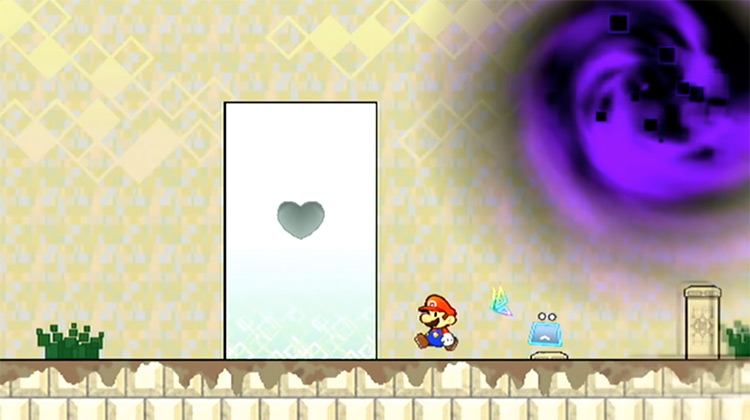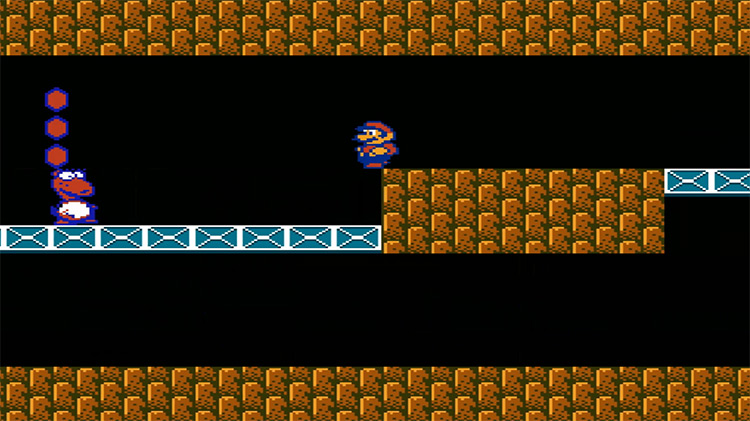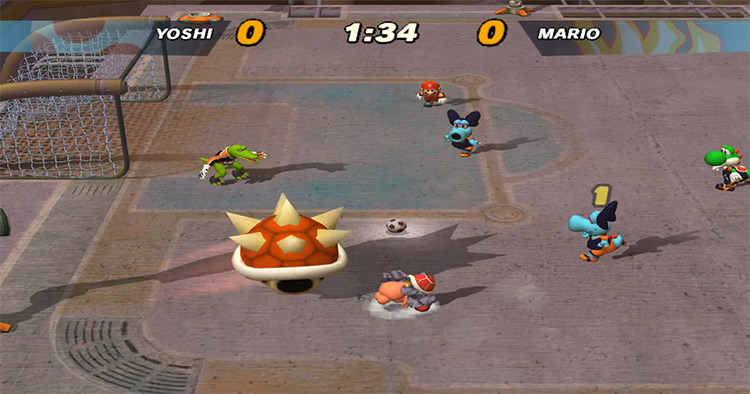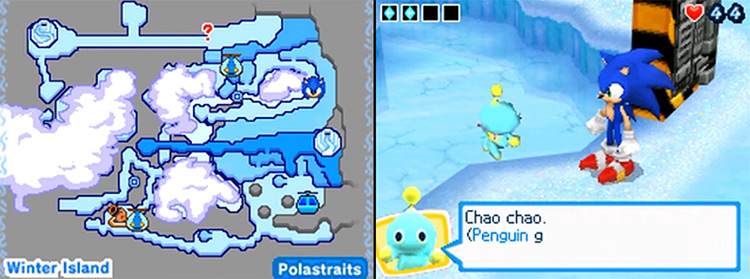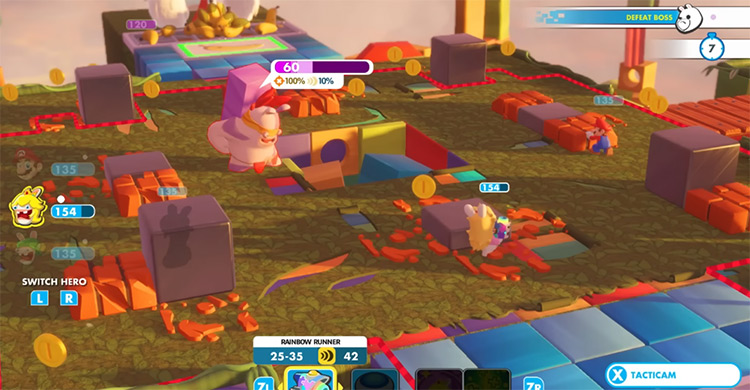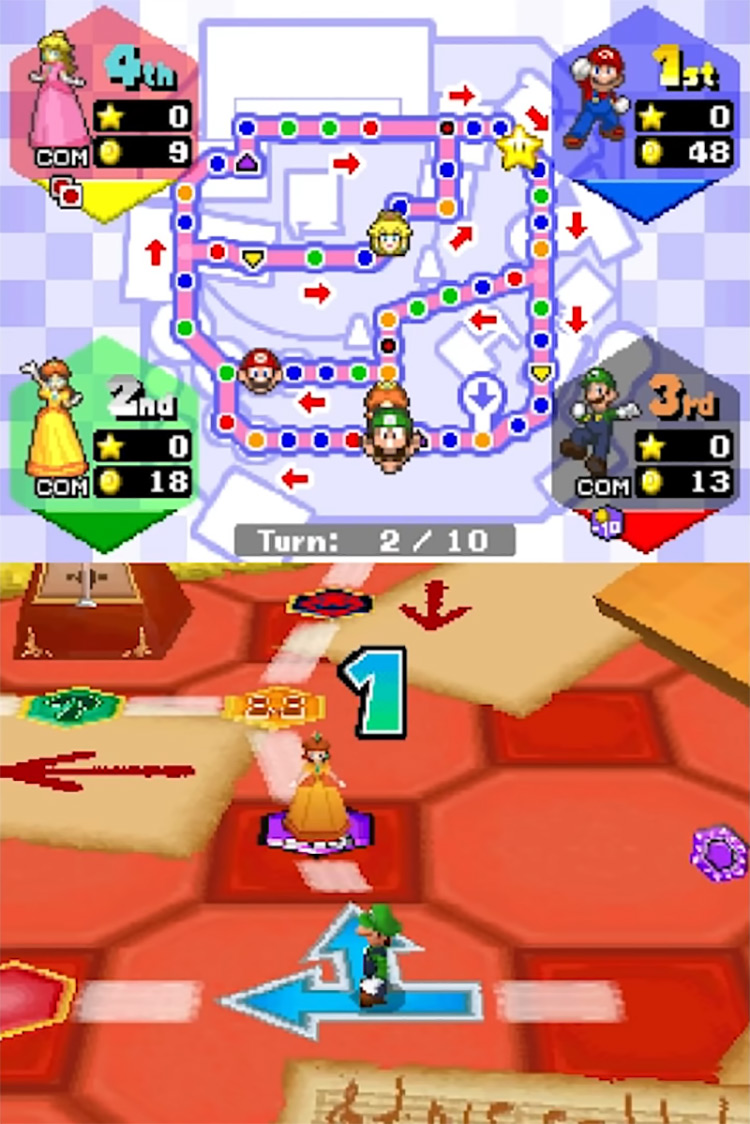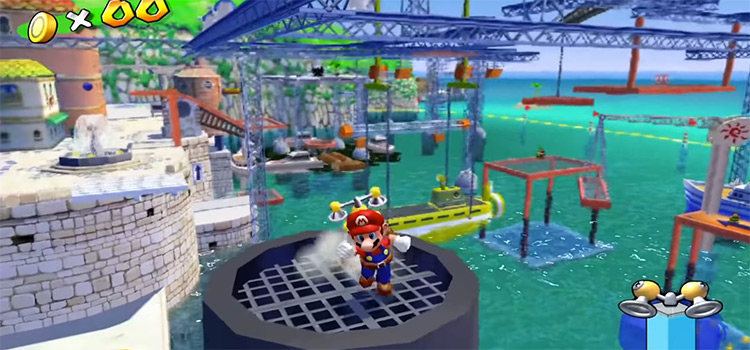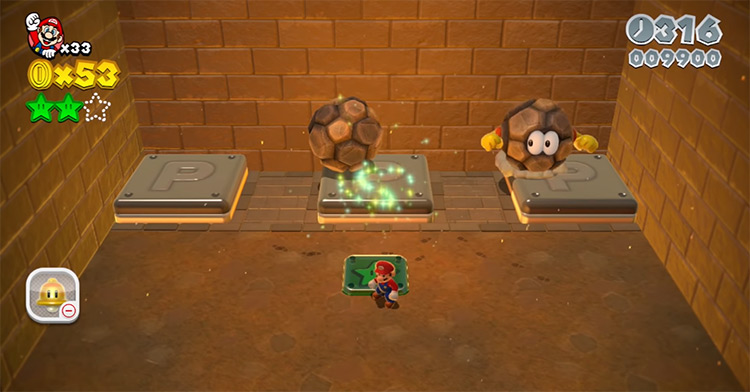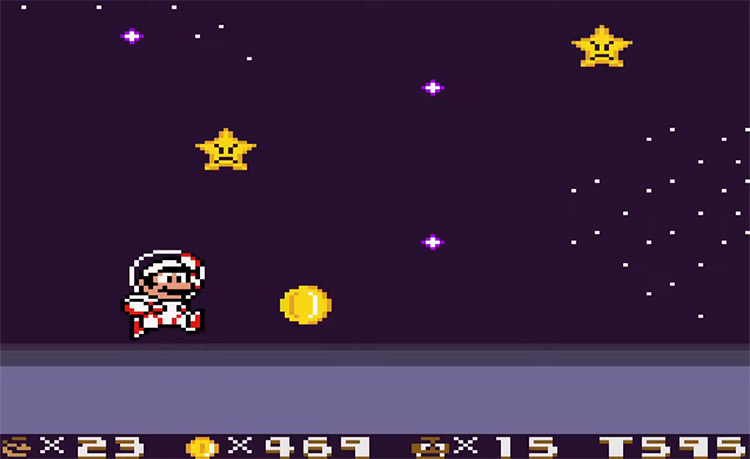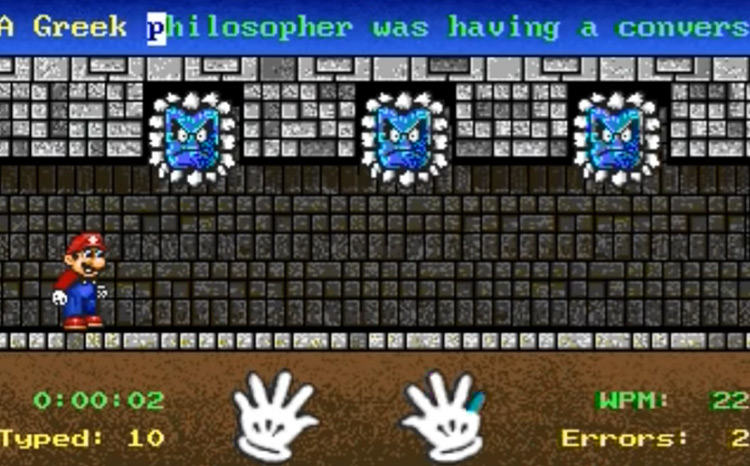That said, many fantastic Mario games get less love than they deserve compared to heavy hitters like Super Mario 64 (1996) and Super Mario Odyssey (2017). In this article, I’ll highlight some underappreciated Mario games that deserve your attention. Whether it slipped under the radar or was marred by unnecessary controversy, you’ll find it here!
10. Super Paper Mario (2007)
When Super Paper Mario first came out on the Wii, long-time fans of the series were turned off by the new action-platformer gameplay. This gave Super Paper Mario a bit of a bad rep, and it took the game quite a while to rise to the privileged position it holds today. Still, it was inevitable that Super Paper Mario would crawl out from under the shadow of its predecessors. With a focused cast of all-star characters and some of the best dialogue in the series, SPM is a not-so-underrated-anymore classic that you need to check out.
9. Super Mario Bros. 2 (US) (1988)
Super Mario Bros. 2 is one of the most divisive games in the franchise. On the one hand, it’s technically not a “real” Mario game. Instead, it’s a rework of a 1987 Famicom platformer called Yume Koujou: Doki Doki Panic that would never see a US release. On the other, Nintendo did a fantastic job bringing the game into the Mario universe. The gameplay might feel a little different, but the setting (and the attention to detail) are 100% Mario-approved. SMB2 was the origin for many of the franchise’s staple characters, including Bob-Ombs, Shy Guys, and Birdo (known by really young children as “Yoshi’s GF”). There’s a reason this game received massive critical acclaim, so don’t overlook it!
8. Super Mario Strikers (2005)
Super Mario Strikers is what happens when you take Mario Kart and blend it together with FIFA Street. That doesn’t sound half bad nowadays, but it was a recipe for disaster for teenage me. The whole reason I became a gamer was my lack of enthusiasm for team-based sports like soccer. If I wanted to go out and run after a ball, I wouldn’t be at home playing GameCube. But that’s where many other sports-hating kids and I were wrong. Super Mario Strikers features a cast of Marioverse characters with unique abilities going toe-to-toe for control of the black-and-white orb. These abilities, coupled with items and power-ups, make this game as similar to real soccer as Dragon Ball is to martial arts.
7. Mario & Sonic at the Olympic Winter Games (NDS) (2009)
Mario & Sonic at the Olympic Winter Games on the Nintendo Wii is recognized as the best entry in the series and widely loved by anyone who played it. Now, the NDS version? That’s a different story. Many people see this as a forced handheld port that makes no sense when the Wii version focuses so much on motion controls. After all, it’s supposed to be a sporty game. Surprising no one who owns an NDS, the touch screen is a fantastic tool for crafting engaging mini-games. It’s one of the best party games in the Nintendo DS’s library.
6. Mario + Rabbids: Kingdom Battle (2017)
A crossover game between Mario and Sonic was surprising – but Mario + Rabbids? I don’t think anyone could’ve predicted that one! But don’t discard it just because it’s an unusual combination. In the words of American computer scientist Grace Hopper: It’s a feature, not a bug. The game’s plot revolves around the fact that these two games would hardly come together under normal circumstances. The completely unexpected turn-based tactical combat is meant to add to the chaos. If you can open your mind to a new experience, I promise you’ll have a ton of fun.
5. Mario Party DS (2007)
Most people consider handheld versions of beloved franchises like Mario Party to be the “second best” you play when you don’t have access to the “real deal.” This has kept a lot of fans from discovering the masterpiece that is Mario Party DS. The Nintendo DS’s touch screen is an invaluable tool for creating engaging mini-games – and it comes at no cost to regular mini-games played with the gamepad. Mario Party DS has everything you expect from this iconic franchise: fun mini-games, branching maps, and Power Stars bought with coins instead of some weird gimmick. It also features one-cartridge multiplayer through Download Play. What’s not to love?
4. Super Mario Sunshine (2002)
Super Mario 64 (1996) made a massive splash in the world of action platformers and shaped what they would become in the age of 3D graphics. Nintendo decided to shake things up with the FLUDD – a multipurpose water pack that gave Mario many new skills. The Super Mario 64 fundamentalists hated that it made Mario more mobile and changed the gameplay to be faster and less linear. On the other hand, series newcomers (read: kids) absolutely loved SMS, which became the third best-selling GameCube game after SSB Melee (2001) and MK: Double Dash (2003). I’m with the kids on this one.
3. Super Mario 3D World (2013)
Super Mario fans have argued over whether the franchise is better as a 2D or 3D platformer for years. In 2011, Nintendo ended the discussion by proposing a third way: a 3D Mario with the aesthetics and level design of a 2D Mario. Despite its commercial success and critical acclaim, many gamers remain skeptical about Super Mario 3D Land (2011) and its sequel, Super Mario 3D World. If you’re in this boat, you’re missing out big time. Luckily, the release of Super Mario 3D World + Bowser’s Fury (2021) on the Nintendo Switch is the perfect opportunity to finally check it out.
2. Super Mario Land 2: 6 Golden Coins (1992)
Modern fans looking to check out the classics tend to overlook the Game Boy games because they’re black and white – but they’re making a big mistake. SML2: 6 Golden Coins is the best Mario game on the Game Boy and one of the best 2D Mario games overall. The developers managed to keep level design quality high, and the game’s sprites and backgrounds are surprisingly evocative for a B&W game. The soundtrack is another massive highlight. This is also one of the most unusual Mario games in terms of lore. It introduced Wario for the first time, and confirmed the existence of “Mario Land” – the plumber’s private island.
1. Mario Teaches Typing (1997)
Back when kids weren’t handed tablets at five years of age so their parents could have a moment to themselves, people needed training to learn to type on a computer keyboard. Books and computer programs were designed for this purpose, but practicing how to type on a keyboard is about as fun as it sounds. An exciting alternative was typing games like Mavis Beacon Teaches Typing (1987) and its much more marketable cousin: Mario Teaches Typing. The gameplay is simple but effective. For each key you hit correctly, Mario performs an action like stomping on a Goomba or jumping over a hole in the road. It’s basically family-friendly Typing of the Dead.
